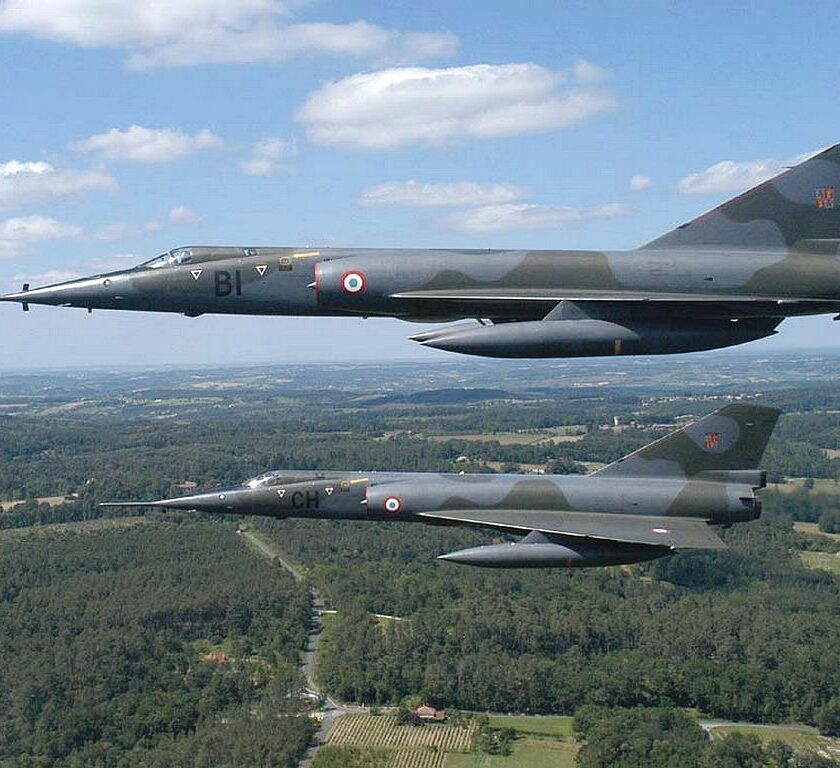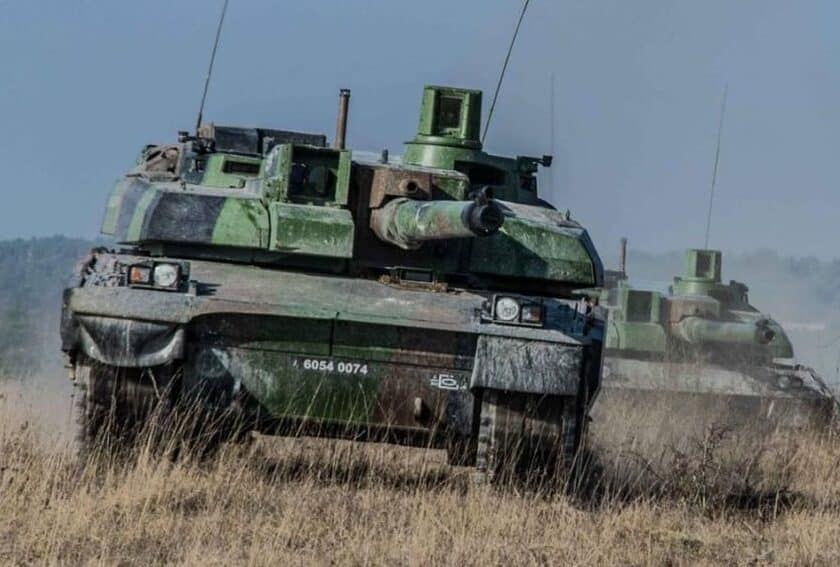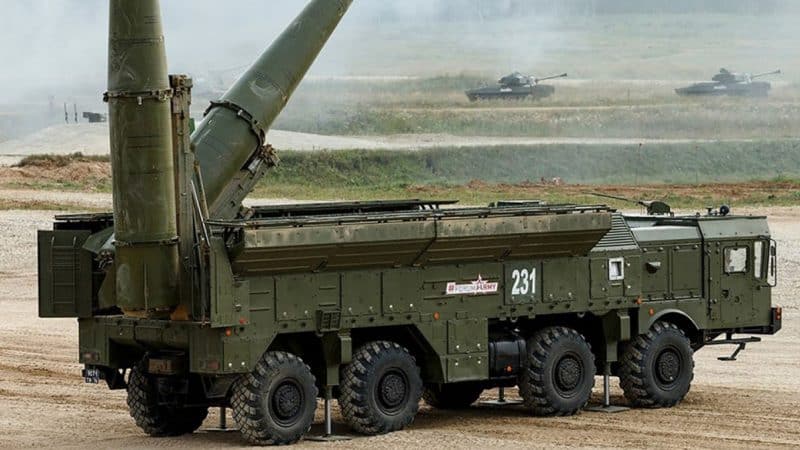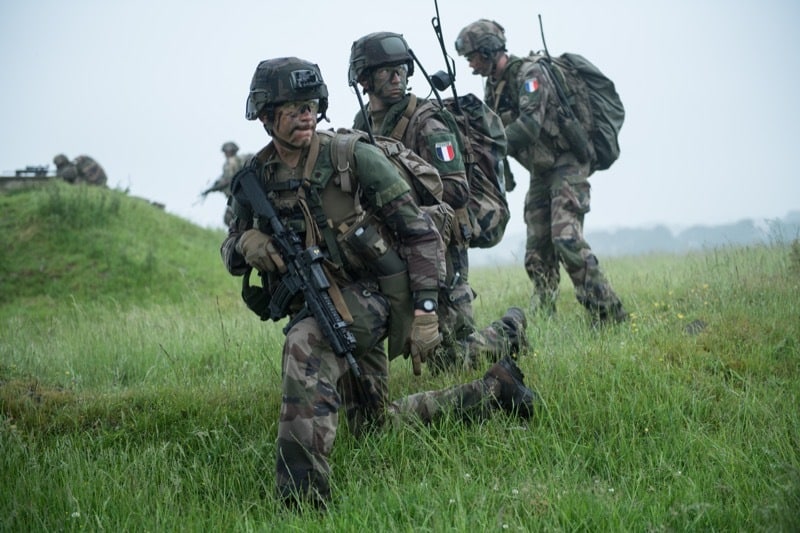“We must bring the defense effort for the French armies to 3% of GDP, as during the Cold War! » You have certainly heard this sentence in recent months, if you follow French or European defense news.
Indeed, developments in the threat, particularly in Europe, and even concerning nuclear deterrence, cast doubt on the relevance of the 2% threshold targeted by the LPM 2024-2030, which seems incapable of giving armies the necessary means. to reasonably accomplish their future missions.
As is often the case, this type of certainty is based more on a powerful feeling, as well as on certain historical, economic, social and even military shortcuts, than on a constructed analysis of the hypothesis.
So, what could the French Armies look like if they actually had a budget equivalent to 3% of the country's GDP? Is this hypothesis effective in responding to threats? Above all, is it realistic and applicable, given the numerous challenges and constraints to which armies must respond?
In this section:
The evolution of the French defense effort from the Cold War to the benefits of Peace
From 1950 to 1970, France's defense spending represented, on average, 5% of the wealth produced each year by the country. This very high rate is explained by the combined action of the Cold War and the Soviet threat, particularly pressing during this period, but also by the two colonial wars in which they participated, in Indochina then in Algeria.

Above all, over the same period, the country rebuilt itself from the consequences of the Second World War and the German occupation, with a very significant effort at reindustrialization and in certain technological fields, including nuclear power, which profoundly transformed the economy of the country.
Ainsi, le GDP per capita in France increased from $10 to almost $500 over the decade 16-000. THE GDP of the country, for its part, also went from $15 billion in 1950 to $126 billion in 1970, to soar to $1060 billion in 1990, and $2650 billion in 2022. Even adjusted for inflation, we understand the reasons which obliged France to devote such percentages to its defense effort until 1970, and part of the reasons which led to the decline in this effort from 1980.
Difficult, under these conditions, to compare the defense effort in 1970 of 3,06%, and that which is devoted today to this same function by the country, both the economic, social, political, industrial, technological and even international, are without comparison with what they were then.
The limits of the threshold at 2% of GDP for the French defense effort
However, the armies under reconstruction, with a defense effort of around 2%, appear very unsuitable to respond to security challenges which are taking shape, particularly since the transformation of the Russian economy and society, putting the armies and the defense industry at the heart of state action.

And for good reason, with a defense effort at 2% GDP, French deterrence will only be able to rely on 4 SSBNs and two strategic bombing squadrons, the Army on a strong land operational force of only 77 soldiers. active, reinforced, it is true, by a large part of the 000 national guards.
This force is armed with only 200 combat tanks, 600 infantry fighting vehicles and just over a hundred artillery systems, and 10 to 20 long-range rocket launchers, far fewer than what produces the Russian defense industry in a single year.
The French Navy is no better off, with its only aircraft carrier, an operational aberration, its six attack submarines, its three helicopter carriers, one of which serves as a training ship, and its fifteen first-rate frigates. , for a country whose metropolis has three maritime facades, and which has the largest exclusive economic zone spread over all the oceans of the planet.
The Air and Space Force, finally, had to reduce its fighter jets to 185 aircraft, of which around thirty are dedicated to the nuclear mission alone, around fifty tactical and strategic transport aircraft, around fifteen tanker planes and four Awacs, less than ten anti-aircraft and long-range anti-missile batteries. It no longer even has high-performance training devices for the training of its fighter pilots, and the training of pilots and subscribers in the squadrons.

Defense being a relative exercise, it is appropriate to compare this format of the French armies at 2% GDP, with 208 men, with the Russian armies, with a budget of $000 billion equivalent to 110% of GDP, with 10 million men, fielding 1,5 SSBNs, more than 12 ICBM strategic missiles, around a hundred strategic bombers, 500 to 2500 tanks, 3500 armored and infantry fighting vehicles, more than 5000 self-propelled guns and rocket launchers, 2000 long-range anti-aircraft batteries, and a thousand combat aircraft.
Certainly, France is not alone in opposing the Russian threat in Europe, and many countries are making significant efforts to rebalance the unfavorable balance of power. However, the French armies have, in Europe, resources held, apart from them, only by the American ally, or even by the British in certain cases.
What could the French armies be if France devoted 3% to the army budget?
In this context, would increasing the defense effort to 3% make it possible to re-establish a favorable balance of power, in the face of the Russian and global threat, in Europe and elsewhere? This would, as we will see, probably be the case.
Thus, changes in the format of the armies, going from 2 to 3% of GDP, would be much more sensitive than they were when going from 1,5 to 2%, from 2016 to 2024. Indeed, resulting from this first increase, which above all made it possible to bring the armies back to a point of budgetary balance on their format, the French forces still respect the volumes targeted by the 2013 White Paper, whether in terms of men, armored vehicles, planes and ships.

Conversely, moving to 3%, would make it possible to rely on all the operating and development investments already covered by the move to 2%, to devote efforts, precisely, to a significant evolution of format. Because, with a 2023 GDP of €2650 billion, a defense effort of 3% would allow the army budget to increase from €47 billion to almost €80 billion, or an added value of €30 billion.
A French deterrent resized to contain the Russian threat
Faced with the Russian threat, and the possible reorganization of European deterrence, a defense budget of €80 billion would make it possible to significantly increase the operational potential of French deterrence, in particular from 4 to 6 SSBNs.
With 6 SSBNs, the French Navy could, in fact, permanently maintain two ships at sea, and a third on alert at 24 hours, for an unlimited period, against a ship on patrol, and one on alert today.
However, the rise in power of the Russian submarine fleet, but also the massive and inevitable arrival of underwater surveillance drones, will increase, in the years to come, the risk that an SSBN at sea could be compromised, therefore incapable of carrying out its deterrent mission.
However, if a nuclear submarine launching missiles into the sea has, let's admit, a 3% chance of being detected during its patrol by these new means, a risk that we can judge to be relatively low, this also means that the French, and therefore European, deterrent posture would be threatened 10 days a year. The adversary would just need to be a little patient to potentially eliminate this risk.


75% of this article remains to read,
Subscribe to access it!
The Classic subscriptions provide access to
articles in their full version, and without advertising,
from 6,90 €.
Newsletter subscription
Register for the Meta-Defense Newsletter to receive the
latest fashion articles daily or weekly


Hello,
What would be the format of the French army if we went to 5% of GDP as during the Cold War?
Could we have 3 GANs, 750 NGFs and several thousand Neuron type drones, 1500 MBTs, 1500 LRMs and 10 SSBNs?
Can we maximize the production of all arms/material/military equipment without increasing debt/inflation or taxes/taxes/charges?
As explained in the article, this 5% story corresponded to a completely different era, when the French economy and society were structured very differently. Sincerely, I absolutely do not see how the armies could effectively exploit a defense effort at 5% GDP, without us actually being in total war.
In addition, to benefit from an effective budgetary return, arms production for the French armies must be equivalent to that exported. There is therefore an obvious threshold in this area, that of the addressable market.